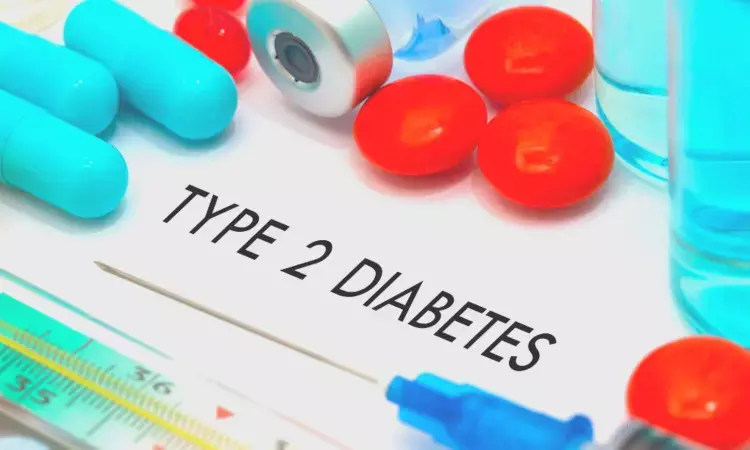- Home
- Medical news & Guidelines
- Anesthesiology
- Cardiology and CTVS
- Critical Care
- Dentistry
- Dermatology
- Diabetes and Endocrinology
- ENT
- Gastroenterology
- Medicine
- Nephrology
- Neurology
- Obstretics-Gynaecology
- Oncology
- Ophthalmology
- Orthopaedics
- Pediatrics-Neonatology
- Psychiatry
- Pulmonology
- Radiology
- Surgery
- Urology
- Laboratory Medicine
- Diet
- Nursing
- Paramedical
- Physiotherapy
- Health news
- Fact Check
- Bone Health Fact Check
- Brain Health Fact Check
- Cancer Related Fact Check
- Child Care Fact Check
- Dental and oral health fact check
- Diabetes and metabolic health fact check
- Diet and Nutrition Fact Check
- Eye and ENT Care Fact Check
- Fitness fact check
- Gut health fact check
- Heart health fact check
- Kidney health fact check
- Medical education fact check
- Men's health fact check
- Respiratory fact check
- Skin and hair care fact check
- Vaccine and Immunization fact check
- Women's health fact check
- AYUSH
- State News
- Andaman and Nicobar Islands
- Andhra Pradesh
- Arunachal Pradesh
- Assam
- Bihar
- Chandigarh
- Chattisgarh
- Dadra and Nagar Haveli
- Daman and Diu
- Delhi
- Goa
- Gujarat
- Haryana
- Himachal Pradesh
- Jammu & Kashmir
- Jharkhand
- Karnataka
- Kerala
- Ladakh
- Lakshadweep
- Madhya Pradesh
- Maharashtra
- Manipur
- Meghalaya
- Mizoram
- Nagaland
- Odisha
- Puducherry
- Punjab
- Rajasthan
- Sikkim
- Tamil Nadu
- Telangana
- Tripura
- Uttar Pradesh
- Uttrakhand
- West Bengal
- Medical Education
- Industry
Fatty Liver Index may detect diabetes even when blood sugar and IR levels normal

Incidence of Diabetes is on the rise globally. One of the underlying mechanisms of type 2diabetes is uncontrolled metabolism of glucose . The liver plays an important role in controlling blood sugar in various pathways, including glycogenesis, glycogenolysis, glycolysis, and gluconeogenesis, and several studies have focused on the relationship between liver dysfunction and Type 2 diabetes.
The fatty liver index (FLI) can be very useful for managing fatty liver and preventing related diseases. As of now no large-scale and long-term follow-up prospective studies have investigated the relationship between FLI and incident type 2 diabetes (T2DM) independent of baseline insulin resistance status.
Researchers have found in a new study that baseline fatty liver index could be a promising guide for the early detection of type 2 diabetes even when prior blood sugar or insulin (HOMA-IR) levels are normal.
The study has been published in the journal Cardiovascular Diabetology.
Blood sugar provides energy to cells of body and acts as fuel, driving our cells, tissues, muscles and organs to perform their respective tasks. In some individuals cells of body defy the signals that insulin sends and refuse to absorb sugar from the blood and this is called insulin resistance.
When insulin resistance develops blood sugar levels begin to soar and the same leads to development of diabetes.
Type 2 diabetes (T2DM) is a significant cause of mortality and comorbidity in various cardiovascular diseases and many other types of cancer. Fatty liver disease is commonly associated with T2DM. It is necessary to diagnose fatty liver and identify disease status to prevent liver-related diseases. The fatty liver index (FLI), an easily available tool in clinical practice, can be very useful for managing fatty liver and preventing related diseases. There is not much literature to investigate the relationship between FLI and incident type 2 diabetes (T2DM) independent of baseline insulin resistance status. Hence, researchers from Korea conducted a study to evaluate the association between FLI and incident T2DM and to determine if FLI could be used as an indicator of T2DM using a large-sample, community-based Korean cohort over 12 years.
Of the 10,030 participants, 7,777 participants with 3,676 men and 4,101 women without diabetes were selected from the present study's Korean Genome and Epidemiology Study (KoGES). FLI is graded into 3 groups low FLI with a score of < 30; intermediate, FLI from 30–59; and high, FLI ≥ 60. The hazard ratios (HRs) with 95% confidence intervals (CIs) for incident T2DM were calculated using multivariate Cox proportional hazards regression models after adjusting for potentially confounding variables.
Results
- In total, 1,490 individuals (19.2%) developed T2DM during follow-up.
- After adjusting for potentially confounding variables, including the HOMA-IR marker, the HRs of incident T2DM for the FLI (30–59), and FLI (≥ 60) increased compared to the reference FLI (< 30).
- FLI was positively related to incident T2DM independent of baseline insulin resistance after adjusting for potential confounding variables.
Thus, the present study throws light on how high FLI precedes and significantly predicts the future development of T2DM among community-dwelling and middle-aged older Korean adults.
Further reading: Seo, IH., Lee, H.S. & Lee, YJ. Fatty liver index as a predictor for incident type 2 diabetes in community-dwelling adults: longitudinal findings over 12 years. Cardiovasc Diabetol 21, 209 (2022). https://doi.org/10.1186/s12933-022-01642-1
Dr Kartikeya Kohli is an Internal Medicine Consultant at Sitaram Bhartia Hospital in Delhi with super speciality training in Nephrology. He has worked with various eminent hospitals like Indraprastha Apollo Hospital, Sir Gangaram Hospital. He holds an MBBS from Kasturba Medical College Manipal, DNB Internal Medicine, Post Graduate Diploma in Clinical Research and Business Development, Fellow DNB Nephrology, MRCP and ECFMG Certification. He has been closely associated with India Medical Association South Delhi Branch and Delhi Medical Association and has been organising continuing medical education programs on their behalf from time to time. Further he has been contributing medical articles for their newsletters as well. He is also associated with electronic media and TV for conduction and presentation of health programs. He has been associated with Medical Dialogues for last 3 years and contributing articles on regular basis.
Dr Kamal Kant Kohli-MBBS, DTCD- a chest specialist with more than 30 years of practice and a flair for writing clinical articles, Dr Kamal Kant Kohli joined Medical Dialogues as a Chief Editor of Medical News. Besides writing articles, as an editor, he proofreads and verifies all the medical content published on Medical Dialogues including those coming from journals, studies,medical conferences,guidelines etc. Email: drkohli@medicaldialogues.in. Contact no. 011-43720751




